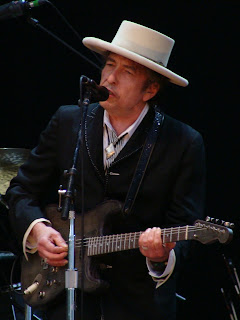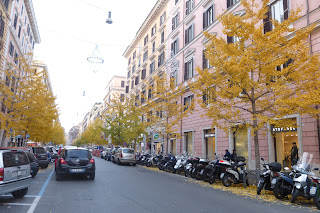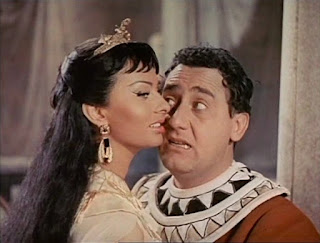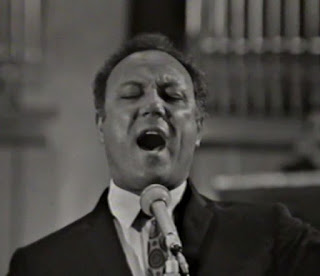Clothes inspired by Surrealist art
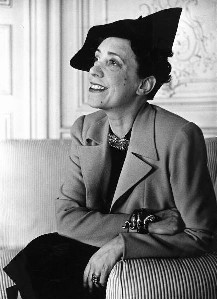 |
| Elsa Schiaparelli left Rome in search of adventure in around 1912 |
The designer Elsa Schiaparelli, who is regarded along with
her rival Coco Chanel as one of the key figures in the fashion world between
the two World Wars, was born on this day in 1890 in Rome.
Heavily influenced by the Surrealist cultural movement – the
artists Salvador Dali and Jean Cocteau were among her collaborators – she became
a favourite of some of the world’s most recognisable women, including the American
actresses Greta Garbo and Mae West, the German singer and actress Marlene
Dietrich, and the socialite and heiress Daisy Fellowes.
Her style shaped the look of fashion in the 1920s and 1930s,
often featuring elements of the trompe l’oeil artistic technique to create
optical illusions, such as the dress she made with Dali’s collaboration that
seemed to be full of rips and tears, or the evening coat she designed with
Cocteau that featured two female profiles facing one another which, viewed
another way, created the impression of a vase for the fabric roses adorning the
shoulders and neck.
Other designs, such as the Lobster Dress and the Skeleton
Dress, both influenced by Dali, satisfied her taste for the outrageous.
Schiaparelli was also an innovator. She was among the pioneers of the wrap dress,
she invented the divided skirt – a forerunner of shorts – that the tennis
player Lili de Alvarez wore at Wimbledon in 1931, was the first to create
designs that included zips in the colour of the fabric and the first to make
brooch-like buttons and fasteners.
 |
| Schiaparelli's 1938 coat-dress, designed with Jean Cocteau, is typical of her Surrealist style |
She was also the first to come up with the idea of a catwalk
show, featuring parading models in artistically designed stage sets with accompanying
music.
The colour Shocking pink was her own creation, a shade of
magenta inspired by a Cartier diamond owned by Daisy Fellowes. Originally called Schiaparelli pink, it was
first used by her on the packaging for her first fragrance, which she called
Shocking, and thereafter became known as Shocking pink.
In fact, there was very little about Schiaparelli’s life
that followed conventional patterns.
Born into wealth in Rome, her family home was an apartment
in the baroque 18th century Palazzo Corsini, a sumptuously grand
palace in the Trastevere quarter of the city that was once home to royalty and
now houses one of Rome’s most important art galleries.
Her mother, Maria-Luisa, was a Neapolitan aristocrat, her
father, Celestino Schiaparelli, a prominent scholar and academic who for a
while was Dean of the Sapienza University of Rome. His brother, the astronomer
Giovanni Schiaparelli, was notable for identifying what for many years were believed to be
canals on Mars.
Elsa herself studied at the University but was soon courting
controversy, publishing a book of sensual poetry deemed so shocking her parents
sent her off to a convent in Switzerland, where she promptly forced them to
bring her back to Rome by going on hunger strike.
 |
| Schiaparelli's trademark colour, Shocking Pink |
She was soon bored with being confined to home, however,
finding her lifestyle, while comfortable, to be unfulfilling, and embarked on a
series of adventures that took her to London, Paris and New York, where she
travelled in the company of a highly unsuitable husband, who called himself Count
Wilhelm Frederick Wendt de Kerlor.
They had met in London after she attended a lecture he gave on theosophy, the study of the mystical and the occult,
in which she had a fascination. He agreed to help her with her English and a relationship developed. In fact, he was essentially a con-man,
passing himself off at various times as a doctor, a lecturer, a detective and criminal
psychologist. Yet he had a charisma she
found hard to resist, they were married in 1914 and when he was deported from
England in 1915 she followed him to Paris, Cannes, Nice, Monte
Carlo and eventually New York.
De Kerlor continued his dubious business practices in New
York, attracting the attention of the authorities, and the couple both at times
feared deportation, Elsa having been suspected of spreading support for
Bolshevism among the Italian community. They had a child, Maria-Luisa, known as
Gogo, in 1920, after which De Kerlor disappeared, abandoning his new family.
She returned with her daughter to France but went back to
New York, having an affair with an opera singer, Mario Laurenti, before his sudden death in 1922 prompted her
to quit America and settle in Paris.
 |
| Schiaparelli models the knitted top with the trompe l'oeil collar that launched her career |
Schiaparelli’s career in fashion grew from the need to earn an independent income. Although
she had worked in a fashion boutique in New York, it was only after a friend
introduced her to a couturier, Paul Poiret, that the idea of a career in the industry
began to have some appeal.
A proposal that she could set up a business selling French
haute-couture in New York came to nothing but her time in Poiret’s company
allowed her to observe his methods, and she began to design clothes of her own.
In 1927, she launched a collection of knitwear featuring the trompe l’oeil
touches that would become her hallmark.
The collection was featured in Vogue magazine, after which her
order book expanded rapidly. She steadily acquired more clients and added to her
range, taking on more staff and opening her first shop, the House of Schiaparelli.
Her reputation grew and grew. By 1931, an established star and celebrity,
she was operating from prestigious premises in Place Vendôme.
Everything changed with the Second World War, however. Soon after Paris fell to the Germans in 1940,
Schiaparelli fled to New York, where she remained until the end of the conflict.
After she returned to Paris, with austerity biting hard and other designers
catching the eye, the business foundered and she took the decision to close in
1954.
Schiaparelli died in Paris in 1973 and for a while her work
was not nearly as well remembered as that of her rival, Chanel. But there has
been a revival of interest recently. In 2012, New York's Metropolitan Museum of
Art featured her work, along with that of Italian designer Miuccia Prada, in a
major exhibition.
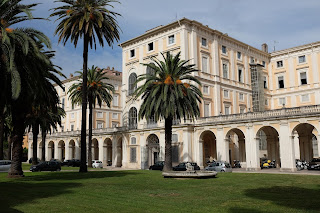 |
| The Palazzo Corsini was Schiaparelli's home as a young girl |
Travel tip:
The Palazzo Corsini, which overlooks the Tiber on Via della
Lungara, just across the road from Villa Farnesina, was erected for the Corsini
family – the Florentine aristocrats who were represented in the capital by Pope
Clement XII (formerly Cardinal Lorenzo Corsini) – on the site of a 15th-century
villa, to a design by the architect Ferdinando Fuga. The villa had previously
been the home of Christina, Queen of Sweden, who moved to Rome after abdicating. The first floor of the
palace now houses the Galleria Nazionale d’Arte Antica. Most of the works were
donated by the Corsini family and acquired by the state in 1883. It encompasses
mainly Italian paintings from the early Renaissance to the late 18th
century, although there is also a Van Dyck and a Rubens. For more information
visit www.barberinicorsini.org
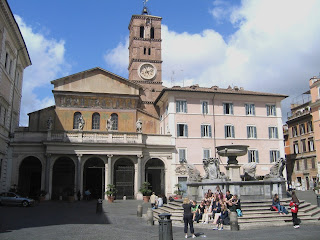 |
| The Piazza di Santa Maria in Trastevere |
Travel tip:
Trastevere is a charming medieval quarter which is
popular with visitors to Rome for its down-to-earth atmosphere and quaint
cobbled streets. The central Piazza di Santa Maria has a homely neighbourhood
feel, although the Basilica di Santa Maria, which dominates the square, contains some beautifully elaborate
golden mosaics by Pietro Cavallini.
Behind the Palazzo Corsini is the University of Rome’s botanical
gardens, with more than 7,000 plant species, while the nearby Gianicolo hill, seldom
scaled by many tourists on account of a 20-minute climb, offers some of the
best views across the city.


